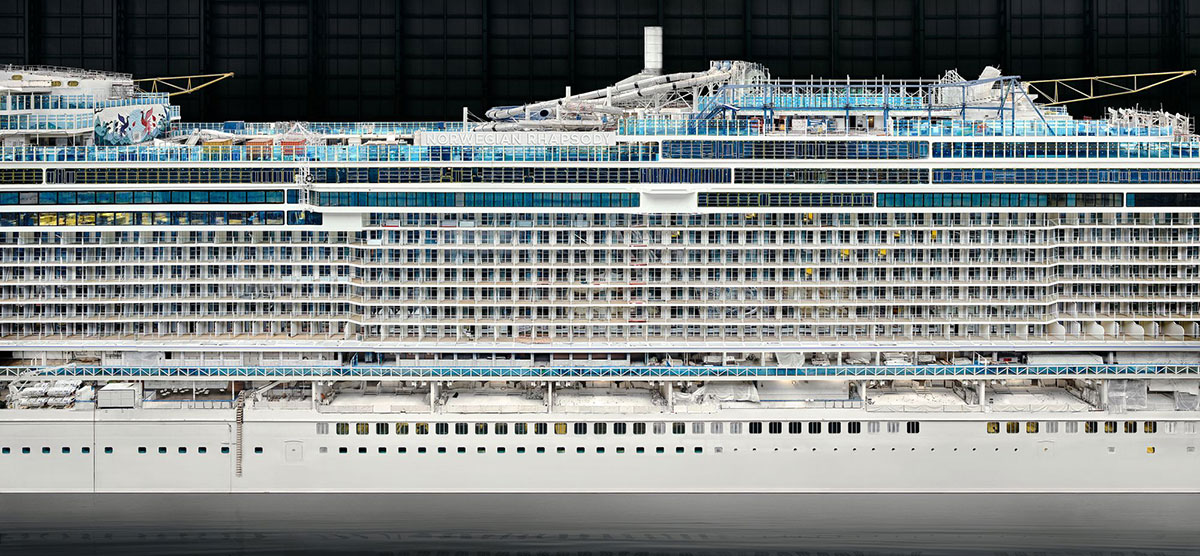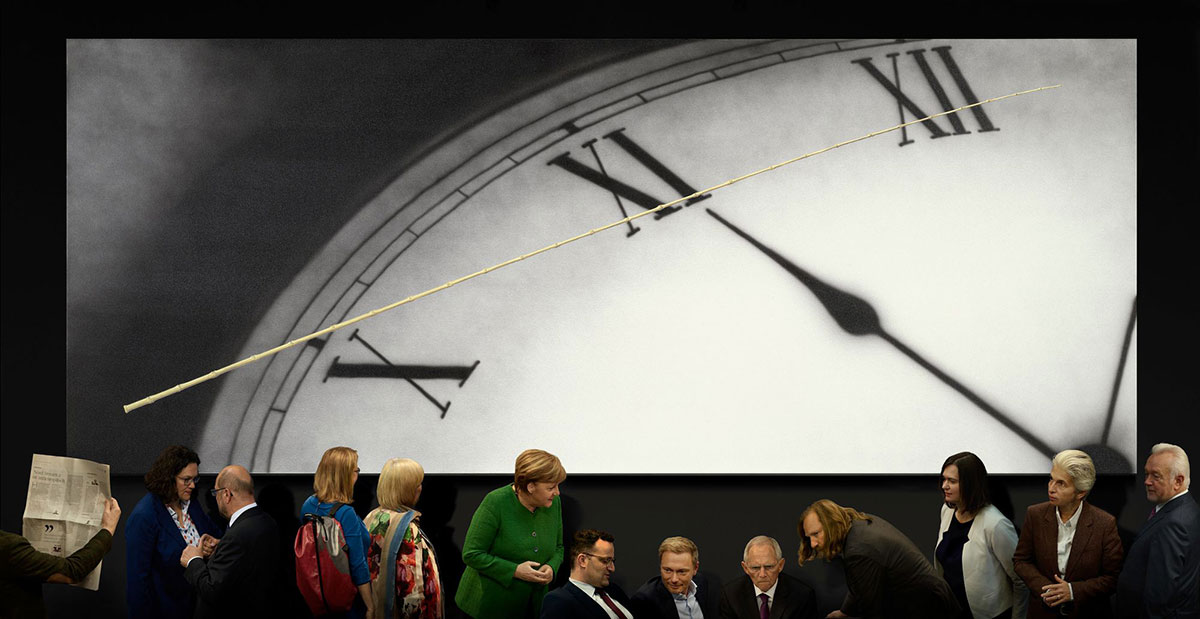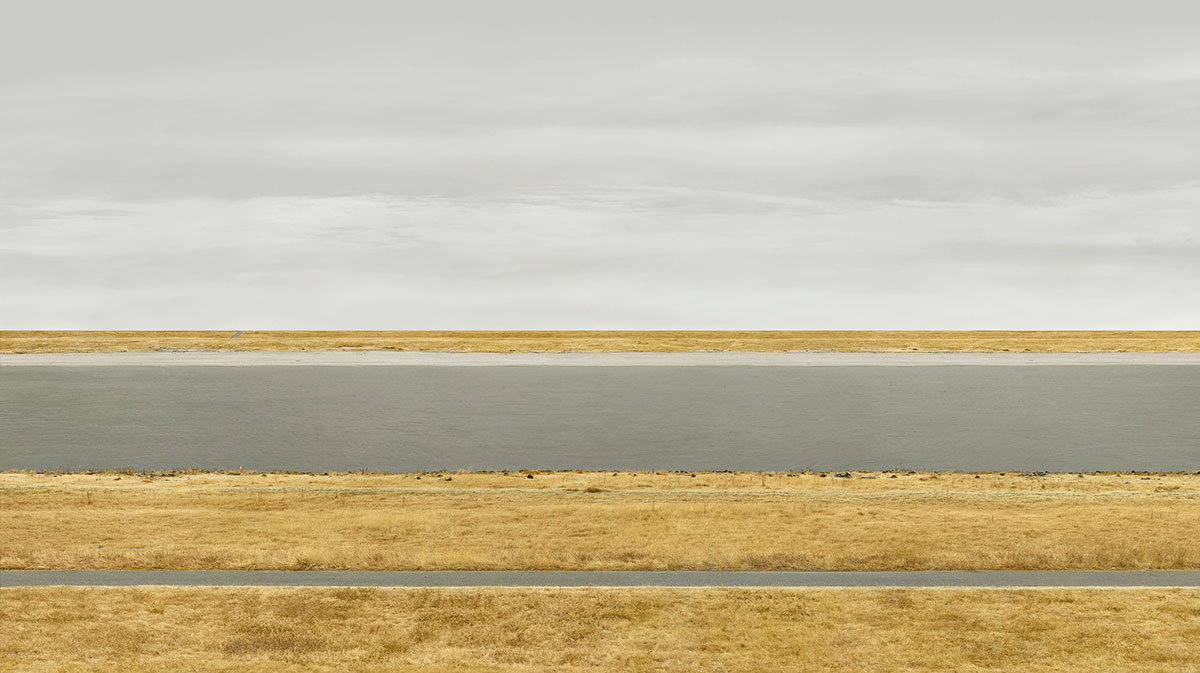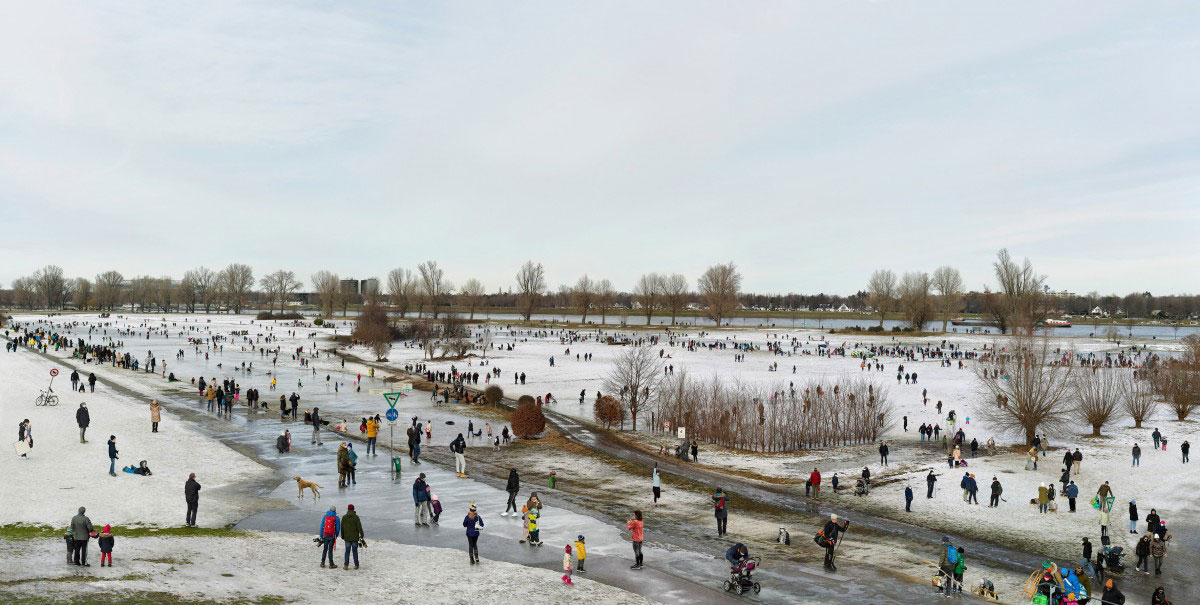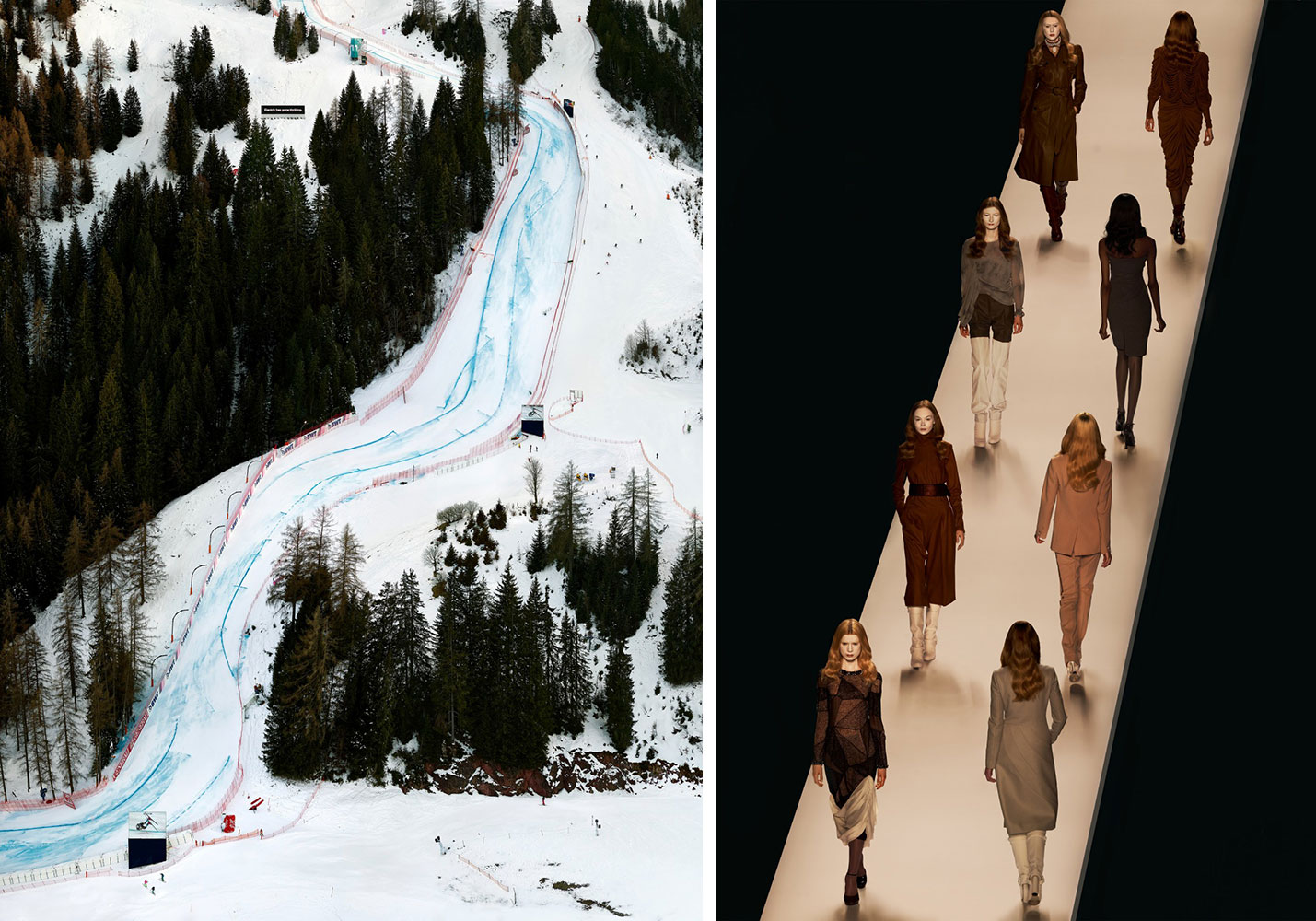PHOTO: Andreas Gursky
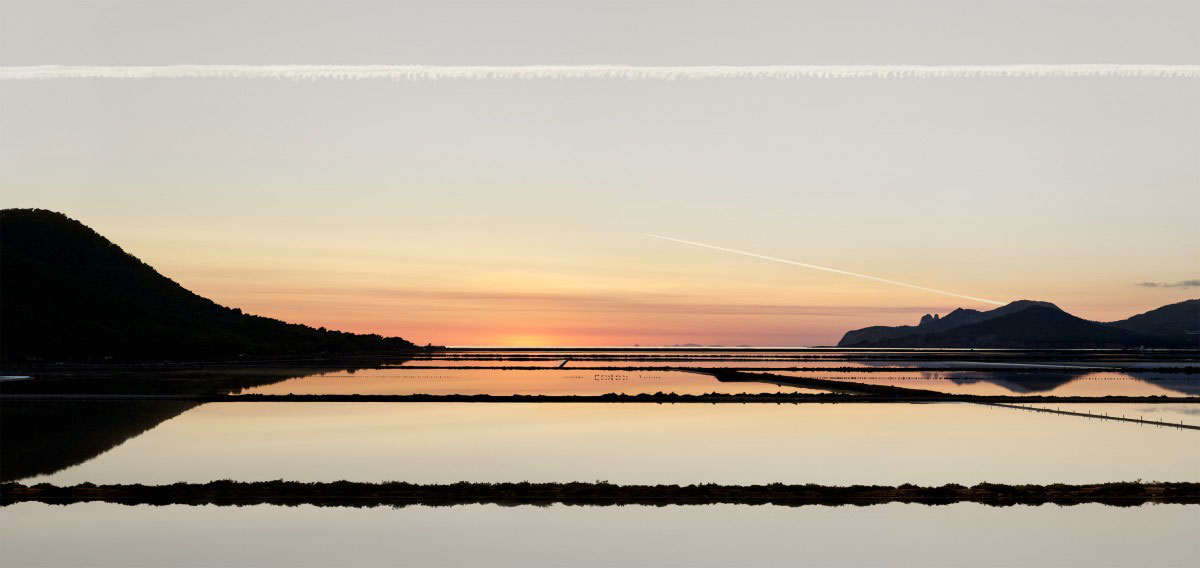 Andreas Gursky is considered one of the most important photographers in the world, an artist who has expanded the boundaries of the photographic medium like few before him. His complex, large-format images—some of which have attained iconic status—show spectacular landscapes and elaborate interiors, combining technical virtuosity with a painterly eye. His work casts a relentless gaze on the age of globalization, rigorously dissecting the effects of modernity.
Andreas Gursky is considered one of the most important photographers in the world, an artist who has expanded the boundaries of the photographic medium like few before him. His complex, large-format images—some of which have attained iconic status—show spectacular landscapes and elaborate interiors, combining technical virtuosity with a painterly eye. His work casts a relentless gaze on the age of globalization, rigorously dissecting the effects of modernity.
By Dimitris Lempesis
Photo: White Cube Archive
Andreas Gursky in his solo exhibition presents new and recent photographs produced over the past four years, these works reflect Gursky’s focus on the ‘essential commonality’ of contemporary life, and the forms and structures of global capitalism. His subjects take on a scale akin to that of history painting. In so doing, Gursky gives spatial precedence to the pressing issues of our age, articulated through expansive scenes that reveal their pictorial complexity. In his new photographs, the artist elaborates upon the role of images in today’s society, addressing the paradoxical nature of the medium and its relationship to the real. Several of the works in the exhibition revisit sites of earlier photographs, including the Hong Kong Shanghai Bank and the Rhine River. The resulting images appear to harness timescales and reflect accelerated political and ecological change. Those representing multinational headquarters include a series featuring Foster + Partners’ Hong Kong Shanghai Bank, which Gursky first shot in 1994. A landmark of the city’s skyline, Gursky’s pictures of the building suggest a financial and social world in flux; “Hong Kong Shanghai Bank II” (2020), for instance, with its cascade of colorful umbrellas visible on the façade, is an allusion to the 2014 ‘umbrella movement’ of anonymous protesters. “Rhein III” (2018), on the other hand, shows the same stretch of river as the iconic work “Rhein II” (1999) and uses almost identical dimensions and a similar, horizontal, banded composition. Resembling a muted color field painting, “Rhein III” depicts a river now depleted, with bleached dry banks and low water levels following the severe summer drought of 2018. The monumental “Eisläufer” (2021), which was taken during a cold snap in the winter of 2020, depicts frozen flood waters in Düsseldorf, Germany, recording their temporary transformation into a spot where locals gathered to walk, skate, and play hockey. In its timeless subject and composition, again engineered in part through extensive digital manipulation, the work evokes the paintings of Pieter Brueghel the Elder and harks back to the visual language of Dutch landscape painting. The fact that the skaters are wearing masks and practicing social distancing, however, also roots it firmly in the era of COVID-19. Another frozen expanse is the subject of “Streif” (2021), which depicts the famous World Cup ski run on the Hahnenkamm mountain near Kitzbühel, Austria. Viewed from a distance and with a slightly elevated perspective, the near vertical stretch is thinly covered and icy, while the surrounding trees are noticeably green and devoid of snow. The vertical composition recalls Gursky’s earlier investigations of sport infrastructures including the Formula 1 racetrack in “Bahrain I” (2005), while the screen in the picture’s bottom left hand corner – freeze-framing a crash on the course – behaves as a reminder of the commercial framework and manufactured thrill bound up with professional sport. Another image of nature bearing the imprint of humankind is “Salinas” (2021), a large-scale landscape photograph taken by Gursky in Ibiza. The extraction and trade of salt has a long history in Ibiza and here Gursky records nature as the site of industry, attesting to his long-standing interest in depicting reality as one built from many contradictions. The question of pictorial verisimilitude underpins a new series of works that examine political structures, produced following several months observation of members of the German Bundestag. In “Politik II” (2020), 13 German politicians, with Angela Merkel at their centre, engage in conversation in an arrangement reminiscent of Renaissance depictions of the Last Supper, yet is here framed against the Pop Art painting “Five Past Eleven” (1989) by Ed Ruscha. Many of Gursky’s works feature paintings by other artists (including Constable and Pollock), an interest in part driven by a broader engagement with methods of presentation and display. This includes iconic works like “99 Cent” (2001), his Prada series and most recently, the Viktor & Rolf pictures. The notion of global industries readily incorporates the fashion industry, a unique multibillion-consumer business where creativity and capital are inexorably entwined. “Bauhaus” (2020) and “Königsbergerstrasse, Diptych” (2020) focus on aspects of modern living. In “Bauhaus” Gursky captures the minimal industrial exterior of the Swiss-German DIY store beside a motorway, the only trace of human presence suggested by the stacked goods, glimpsed just behind two slit windows. Conversely, “Königsbergerstrasse, Diptych” (presents an intimate scene from everyday life showing a woman in an apartment playing a block-building game. Alluding to the confinement imposed by the recent pandemic, Gursky portrays a moment of tension, perhaps seconds before the elaborate wooden tower topples.
Info: White Cube Bermondsey, 144-152 Bermondsey Street, London, United Kingdom, Duration: 29/4-26/6/2022, Days & Hours: tue-sat 10:00-18:00, sun 12:00-18:00, https://whitecube.com/
